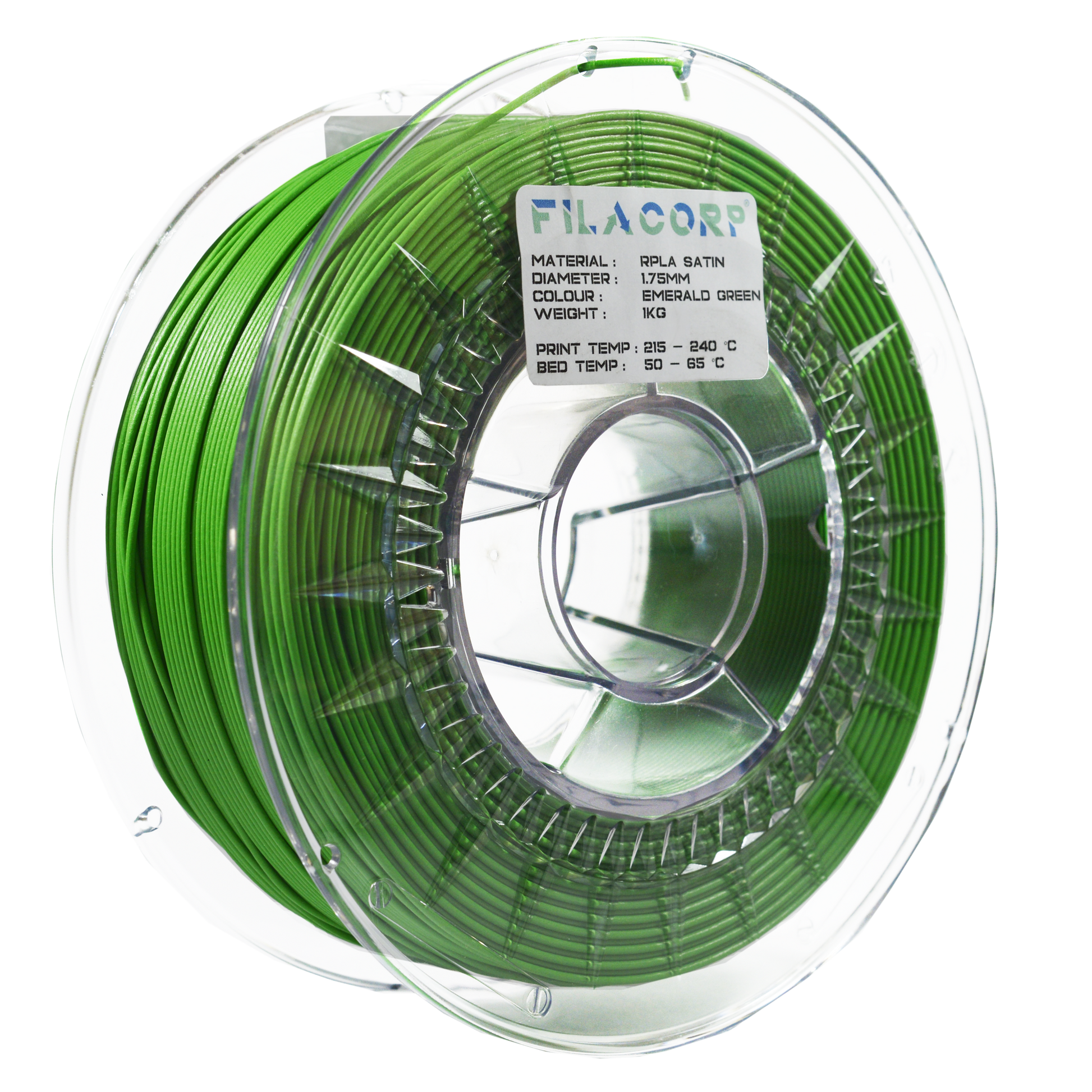Filacorp
rPLA Satin - Emerald Green
rPLA Satin - Emerald Green
€0.86 Spool Deposit Included — refunded on return
Buy 5 for €11.99 each (€0.86 spool deposit included)
Couldn't load pickup availability


About rPLA Satin
Filacorp rPLA Satin features a precise manufacturing tolerance of ±0.03mm, top speed of 1000mm/s and is made out of 100% recycled PLA. This high-quality filament offers a sleek, shiny finish, perfect for creating stunning and sustainable 3D prints.With sustainably sources pigments, the colour additives come from renewable resourced materials.
Compared to standard PLA, our rPLA Satin provides the same high-quality performance, with no compromises on strength or durability. It excels in delivering outstanding 3D printing results that have both a superior finish and eco-friendly background, making it an ideal choice for sustainable creations.
Recommended Print Settings
-
Nozzle Temperature
225 (± 10 °C)
-
Print Bed Temperature
60 (± 5 °C)
-
Fan Speed
100%
Key Attributes
-
Pros
Easily Printable
High Speed Printing
Environmentally Friendly
Negligible Warping & Shrinkage
Suitable For Various Print Sizes
-
Cons
Limited Print Flexibility
Low Temperature Resistance
Absorbs Moisture (Hygroscopic)

sourced from italy
Our rPLA Satin Pellets
The foundation of our rPLA Satin Collection lies in premium recycled PLA pellets sourced from Italy. Known for their exceptional quality, these pellets are the starting point for a filament that blends elegance with eco-conscious performance, ensuring a flawless printing experience every time.

sourced from United Kingdom
Our Colour Range
The rPLA Satin Collection boasts refined, luxurious colours, crafted using pigments sourced from the UK. Produced with sustainability in mind, these eco-friendly hues are carefully selected to enhance the smooth, premium finish, adding a touch of sophistication to every print.

proudly manufactured in Malta
Where it's Made
Every spool of our rPLA Satin Collection is proudly manufactured in Malta, where innovation meets artistry. With a commitment to precision and quality, we transform recycled materials into filament that redefines sustainable 3D printing. Each spool is a testament to Malta’s growing legacy in sustainable manufacturing and our unwavering dedication to excellence.
Customers also bought
-
 Sold Out
Sold OutrPLA Prime - Transparent
Regular price €14,65 EURRegular priceUnit price / per€14,65 EURSale price €14,65 EURSold Out -
rPLA Prime - Frost White
Regular price €14,65 EURRegular priceUnit price / per€14,65 EURSale price €14,65 EUR -
 Sold Out
Sold OutrPLA Prime - Midnight Black
Regular price €14,65 EURRegular priceUnit price / per€14,65 EURSale price €14,65 EURSold Out -
rPLA Prime - Shark Grey
Regular price €14,65 EURRegular priceUnit price / per€14,65 EURSale price €14,65 EUR







